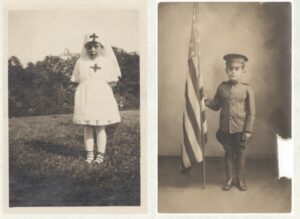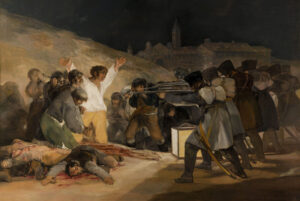[imagebrowser=65]
Inspired by poster artist Francisque Poulbot’s comic and colorful illustrations of children playing at war, Gimpel went to work photographing the children of the Grenéta neighborhood in Paris
The French army was in a precarious position in the summer of 1915, as its offensives bogged down and casualties skyrocketed. L’Illustration, a popular image-driven newspaper, encouraged renowned Paris-based photojournalist Léon Gimpel to find subjects worthy of color photographs—a rarity at a time when the heavy equipment and complex processing of color newspaper photography meant few photographers could shoot for that medium. Inspired by poster artist Francisque Poulbot’s comic and colorful illustrations of children playing at war, Gimpel went to work.
Every Sunday during August and September he gathered the children of Grenéta Street, in the heart of Paris. He helped them construct props with whatever was available, then cast a scene and shot it using his distinctive method of autochrome color photography. After each shoot he rewarded his happy troops, whom he dubbed the Grenéta Street Army, with hard candy for the day’s work. The result was mesmerizing—surreal, luminous depictions of children playfully reenacting scenes from one of the deadliest wars in history.
The photographer had already sealed his reputation as an innovator. In 1904, shortly after he began working for L’Illustration, Gimpel developed a method to increase the sensitivity of glass plate “film,” making possible some of the earliest night photography of Paris. Later he experimented with the autochrome color film development process, raising the sensitivity of the color plates by 500 percent, which, by increasing the speed of the image capture, made it more viable for on-the-spot news photography. His photograph of the king and queen of Denmark, published by L’Illustration on June 29, 1907, became the first color photograph to run in a newspaper.
In 1915, however, Gimpel’s bright-hued images of Parisian children “at war” were rejected by L’Illustration’s editors, who considered the subject matter too trivial for such a perilous period. Nonetheless, Gimpel and the Grenéta Street Army were unexpectedly honored in early 1916 with an exhibit of those 20-by-30-inch photographs at a prominent Paris photography gallery. The exhibit was such a success that it ran for two weeks rather than the usual one. Recent years have seen a resurgence of interest in Gimpel’s work; his Grenéta Street Army series is now hailed as a masterpiece, a brilliant, beautifully colored photographic essay that evokes the belle époque even as France was becoming thoroughly mired in the First World War.





